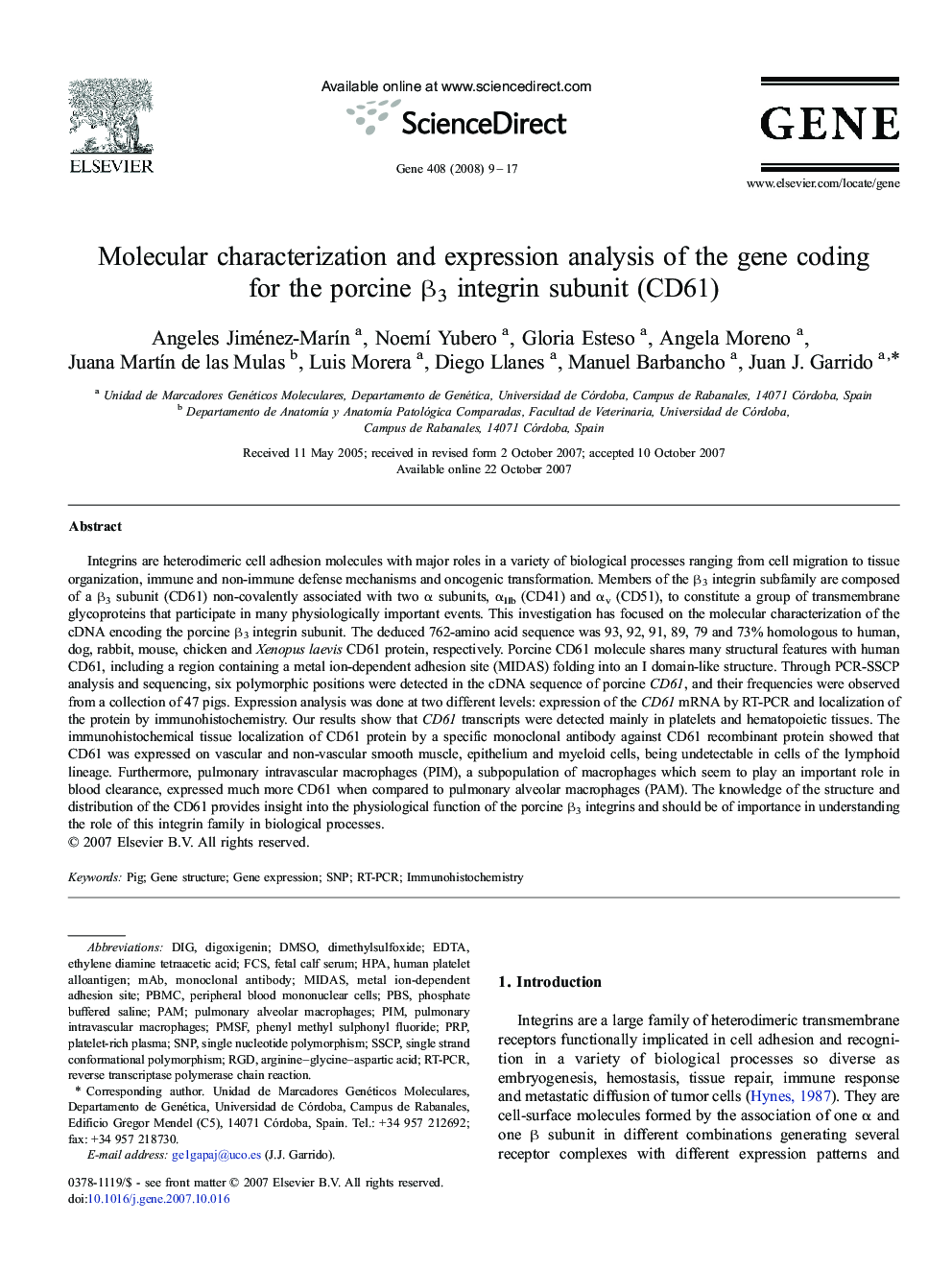| Article ID | Journal | Published Year | Pages | File Type |
|---|---|---|---|---|
| 2819372 | Gene | 2008 | 9 Pages |
Integrins are heterodimeric cell adhesion molecules with major roles in a variety of biological processes ranging from cell migration to tissue organization, immune and non-immune defense mechanisms and oncogenic transformation. Members of the β3 integrin subfamily are composed of a β3 subunit (CD61) non-covalently associated with two α subunits, αIIb (CD41) and αv (CD51), to constitute a group of transmembrane glycoproteins that participate in many physiologically important events. This investigation has focused on the molecular characterization of the cDNA encoding the porcine β3 integrin subunit. The deduced 762-amino acid sequence was 93, 92, 91, 89, 79 and 73% homologous to human, dog, rabbit, mouse, chicken and Xenopus laevis CD61 protein, respectively. Porcine CD61 molecule shares many structural features with human CD61, including a region containing a metal ion-dependent adhesion site (MIDAS) folding into an I domain-like structure. Through PCR-SSCP analysis and sequencing, six polymorphic positions were detected in the cDNA sequence of porcine CD61, and their frequencies were observed from a collection of 47 pigs. Expression analysis was done at two different levels: expression of the CD61 mRNA by RT-PCR and localization of the protein by immunohistochemistry. Our results show that CD61 transcripts were detected mainly in platelets and hematopoietic tissues. The immunohistochemical tissue localization of CD61 protein by a specific monoclonal antibody against CD61 recombinant protein showed that CD61 was expressed on vascular and non-vascular smooth muscle, epithelium and myeloid cells, being undetectable in cells of the lymphoid lineage. Furthermore, pulmonary intravascular macrophages (PIM), a subpopulation of macrophages which seem to play an important role in blood clearance, expressed much more CD61 when compared to pulmonary alveolar macrophages (PAM). The knowledge of the structure and distribution of the CD61 provides insight into the physiological function of the porcine β3 integrins and should be of importance in understanding the role of this integrin family in biological processes.
